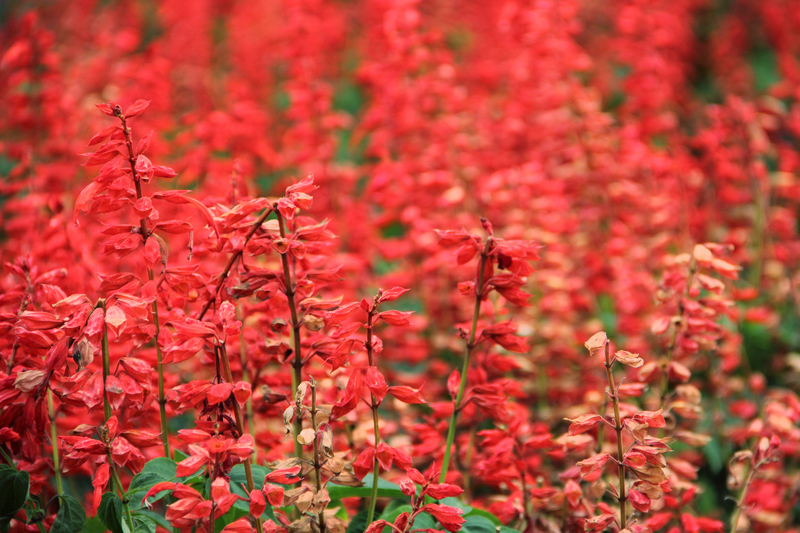Landscaping Secrets for Getting Rid of Old Tree Stumps
If you've ever had a tree removed from your yard, you're probably familiar with the stubborn reminder it leaves behind: the old tree stump. Not only are these unsightly, but they can also become a hazard, attracting pests and making mowing a chore. The good news is, with the right landscaping secrets, you can effectively remove old stumps and reclaim your garden space. In this comprehensive guide, we'll share proven techniques and tips to help you get rid of unwanted tree stumps and keep your landscape looking its best.

Why Is Removing Old Tree Stumps Important?
Getting rid of tree stumps is about more than just aesthetics. Here are a few reasons to prioritize tree stump removal:
- Prevents pests: Old stumps often attract termites, carpenter ants, and beetles, which can spread to healthy trees or even your house.
- Stops fungal growth: Rotting wood can host mushrooms and fungi, which may be toxic to kids and pets.
- Improves safety: Stumps are trip hazards, particularly for kids playing in the yard.
- Frees up space: Removing stumps opens up valuable yard space for new landscaping projects.
- Prevents regrowth: Some tree stumps can continue to sprout, leading to unwanted saplings in your lawn.
In short, proper stump removal is key for a healthy, attractive, and functional landscape.
Best Methods for Removing Tree Stumps in Your Landscape
There's no one-size-fits-all approach to tree stump elimination. The best method often depends on the stump's size, location, and your available tools. Let's explore the top stump removal strategies landscapers and homeowners rely on.
1. Manual Tree Stump Removal
For small tree stumps with shallow roots, a hands-on approach can be effective. Here's how you can tackle it:
- Digging: Use a shovel to clear away soil and expose the roots. Cut away roots with a mattock, axe, or pruning saw. Rock the stump back and forth until you can pull it free.
- Tools Needed: Shovel, axe, mattock, pruning saw, and possibly a crowbar.
- Best for: Small, old tree stumps up to 12 inches in diameter.
- Tips: Water the area a day before starting to soften the soil and make digging easier.
Manual removal is eco-friendly and inexpensive, but it does require some muscle and patience.
2. Grinding the Tree Stump
If you're dealing with a large or deeply rooted stump, stump grinding could be your answer. This technique involves a powerful machine that grinds the stump into wood chips.
- How It Works: A stump grinder uses a rotating blade to chew up the wood and reduce the stump to mulch below ground level.
- Needed Tools: Stump grinder (rental from a local garden center or home improvement store).
- Best for: Medium to large stumps or when you want fast results.
- Tips: Always wear protective gear: goggles, gloves, long pants, and ear protection. Keep bystanders and pets away.
Grinding old tree stumps is quick and effective, leaving you with mulch you can use to nourish garden beds!
3. Chemical Stump Removal
For those who prefer a less physical option, chemical removal offers an effective way to decay old tree stumps over time.
- How It Works: Drill deep holes into the stump and fill with a stump removal product (usually potassium nitrate). Add water and allow the chemicals to break down the lignin and cellulose for several weeks.
- Best for: Homeowners who don't mind waiting several months for results or have difficult-to-reach stumps.
- Cautions: Keep pets and children away from treated stumps. Avoid using chemicals near edible plants.
- Final Step: Once the wood is soft and crumbly, break it apart with an axe or shovel and remove the remains.
This chemical approach to stump removal is a good option if you want low effort and are not in a hurry to reclaim the area.
4. Burning Old Tree Stumps
Some landscapers recommend burning as a method to eliminate stumps completely.
- How It Works: Drill holes into the stump, fill with kerosene or fuel oil (never gasoline), and let it soak. Ignite the stump and let it burn down slowly.
- Best for: Rural areas or large properties with quick safe burning conditions.
-
Tips and Warnings: Burning tree stumps may be illegal in residential areas and can be hazardous.
Always check local ordinances and obtain permits if required. - Aftercare: Extinguish thoroughly and fill the hole left behind once the stump is gone.
Burning stumps is an ancient method, but modern safety standards mean it's less common today.
5. Natural Decay (Letting Nature Do the Work)
If you're not in a rush, letting the stump rot naturally is the most eco-friendly option.
- How to Accelerate: Keep the stump moist, cover with soil or mulch, and drill holes to increase water and oxygen access. You can also apply compost or manure to speed decomposition.
- Best for: Remote areas or wild gardens where appearance doesn't matter.
- Drawbacks: This process can take years, and the stump may attract unwanted pests or fungi meanwhile.
Although slow, this method is cost-free and gentle on the environment.
Innovative Landscaping Ideas for Old Tree Stumps
Sometimes, removing a tree stump isn't immediately practical. While you wait, why not put it to use in your garden design?
- Planter Stand: Hollow out the stump's center and fill with soil and flowering annuals for a rustic planter.
- Garden Sculpture: Carve the stump into whimsical shapes or critters to add charm.
- Moss or Fern Seat: Cover with moss and shade-loving plants to create a cool, green perch.
- Bird Feeder Platform: Level the top and add a bird feeder for eco-friendly wildlife support.
These creative alternatives help the old stump contribute positively to your landscape's appearance while you plan for future removal.
Step-by-Step Stump Removal Process: A Detailed Guide
To ensure the best results when aiming for complete tree stump removal, follow these steps:
- Assess the Stump: Determine its size, location, and surrounding landscaping. Note any obstacles (rocks, pipes, fences) that may complicate removal.
- Choose a Method: Decide whether you'll dig, grind, apply chemicals, burn, or use another approach.
- Gather Tools and Safety Gear: Depending on the method, you'll need a shovel, axe, grinder, chemicals, gloves, and safety equipment.
- Prepare the Area: Clear away rocks, loose branches, and debris. Water the ground if digging.
-
Remove the Stump: Follow your selected procedure carefully.
- Manual Removal: Dig and cut away roots, prying the stump loose.
- Grinding: Make multiple passes with the grinder, reducing the stump below soil level.
- Chemical: Drill holes, apply product and allow to decompose before breaking up the stump.
- Fill the Hole: Once the stump is gone, fill the empty space with soil. Tamp down and seed or sod the area if desired.
- Maintain and Monitor: Check periodically for any new shoots or regrowth, and remove as needed.
Common Mistakes to Avoid When Removing Tree Stumps
Even experienced gardeners can make missteps when tackling old stump removal. Avoid these pitfalls:
- Skipping safety: Always wear gloves, eye protection, and sturdy shoes--especially when using power tools.
- Ignoring utilities: Call your local utility company before digging to avoid hitting pipes or cables.
- Using the wrong chemicals: Some products are not stump-specific and may harm soil quality or nearby plants.
- Not removing roots: Leaving large roots can cause tripping hazards or allow regrowth.
- Overfilling the hole: Leave room for soil to settle or the area will create a low spot over time.
FAQs: Tree Stump Removal for Home Landscapes
How long does it take to remove a tree stump?
Manual or grinding methods can take a few hours, while chemical or natural decomposition may take several months to years.
Can I use Epsom salt for stump removal?
Yes, Epsom salt (magnesium sulfate) is a safer alternative to harsher chemicals. Drill holes and fill with Epsom salt and water to speed up decaying.
Should I hire a professional for stump grinding?
For large stumps or if you lack experience with power equipment, professional stump removal services are recommended for safety and efficiency.
Is it necessary to remove all old tree roots?
Removing as many roots as possible is ideal, especially big surface and lateral roots, to prevent regrowth and smooth out the landscape.
What should I do with the leftover wood chips?
Use as mulch for garden beds, walkways, or compost. If you suspect the old tree had disease, dispose of wood chips to prevent spreading.

Eco-Friendly and Safe Stump Removal Practices
Whenever you remove tree stumps, consider the environment and your family's wellbeing:
- Choose non-toxic methods: Prefer manual, grinding, or Epsom salt to avoid hazardous chemicals.
- Recycle stump byproducts: Use wood chips as mulch or compost material, unless disease is suspected.
- Prevent soil erosion: Refill holes and reseed immediately to maintain healthy yard soil.
The Lasting Benefits of Removing Old Tree Stumps
Eliminating old tree stumps from your landscape doesn't just enhance curb appeal--it also protects your garden from pests, fungi, and hazards while opening up opportunities for new planting and recreation. By following the expert tips in this guide, you can confidently tackle even the most stubborn stumps, transforming your outdoor space into a safe, healthy, and beautiful retreat.
If you're ready for a smoother lawn, safer yard, and a more attractive garden, try these proven landscaping secrets for getting rid of tree stumps. Whether you go with manual, grinding, chemical, or creative options, the path to a stump-free landscape is just a few steps away!